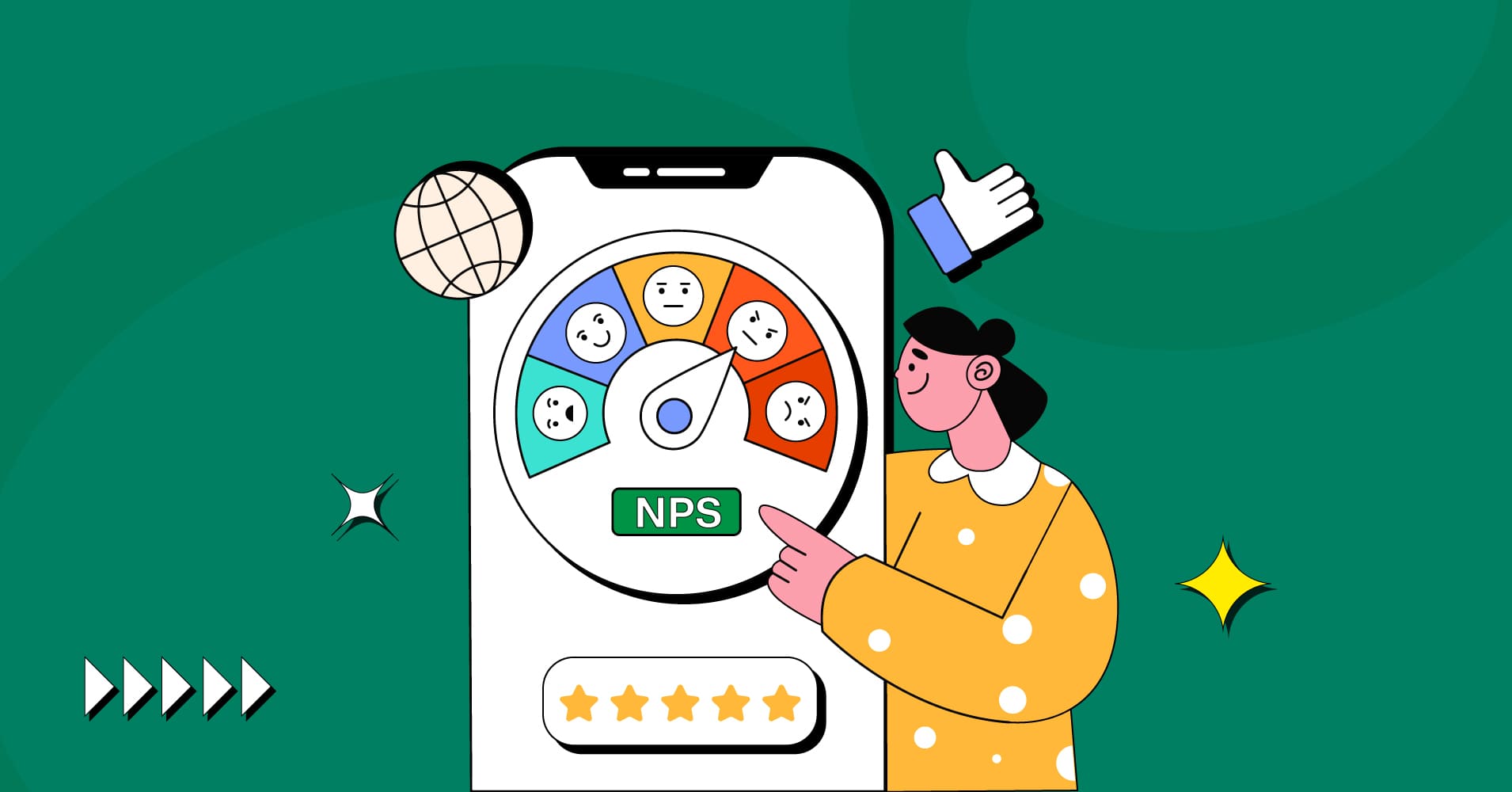
What is Net Promoter Score? Your Ultimate Guide to NPS
In this comprehensive guide, you will find all the essential information about Net Promoter Score (NPS).
When considering choices like a new apartment, job switch, gadget, or vacation, we instinctively seek online information and ask for personal referrals. And it’s no surprise that our decisions are now mostly influenced by these two key factors,
- Online research.
- Recommendations from loved ones. (Recommendations carry immense weight)
According to research by BrightLocal, “a striking 91% of people regularly or occasionally read online reviews. And, 84% trust them as much as personal referrals.” This highlights the pivotal role customer feedback plays in shaping brand perceptions.
Surprisingly, even if you excel in branding, content creation, and email marketing, a single negative customer experience can profoundly impact your business, potentially costing valuable prospects. Customers are more likely to share negative experiences, reaching nearly three times as many people as positive ones.
Social media has made sharing recommendations and grievances effortless. By collecting and acting promptly on customer feedback, you can prevent negative experiences, foster satisfaction, and drive organic referrals.
That’s where Net Promoter Score (NPS®) comes into play. So, if you want to learn more about it and take another leap toward customer loyalty and advocacy, keep reading.
What is Net Promoter Score (NPS)?
Net Promoter Score (NPS) is a customer satisfaction benchmark. It gauges the likelihood of customers recommending your business to others. NPS is a metric used to measure customer loyalty, satisfaction, and enthusiasm.
Basically, it asks questions like: “On a scale of 0 to 10, how likely are you to recommend this product/company?”
NPS is crucial for businesses of all sizes. It focuses on earning enthusiastic customers and provides a trackable measure over time. Unlike other metrics, NPS captures overall sentiment towards a brand, offering actionable insights for enhancing the customer experience.
Moreover, it can assess employee satisfaction, providing internal insights.
Good Net Promoter Score (NPS)
A Net Promoter Score (NPS) can range from -100 to +100. An NPS between 0 and 30 is alright, but there’s definitely room to step up your game. If you hit above 0, that’s a good start, but the real excitement kicks in when you cross the 50 mark. That’s when things get great.
And if you manage to go beyond 70, well, you’re entering the realm of excellence. However, achieving those numbers is no walk in the park. It’s outstanding and rare.
In New Zealand and Australia, they keep it simple. Anything above 0 is considered “good.” But remember that what’s considered “good,” “bad,” or “neutral” can wildly differ from one industry to another.
How to calculate Net Promoter Score
To calculate your Net Promoter Score (NPS), conduct a customer survey using the questions like:
“On a scale of 0 to 10, how likely are you to recommend us to a friend?”
Categorize respondents based on their scores: 0-6 as Detractors, 7-8 as Passives, and 9-10 as Promoters.
Exclude Passives from the calculation. Subtract (-) the percentage of Detractor responses from the percentage of Promoter responses to obtain your NPS. The NPS scale ranges from -100 to 100.
NPS online calculation
Try our live NPS calculator and see the results instantly!
Powered by FluentForms
Key Benefits of Net Promoter Score (NPS)
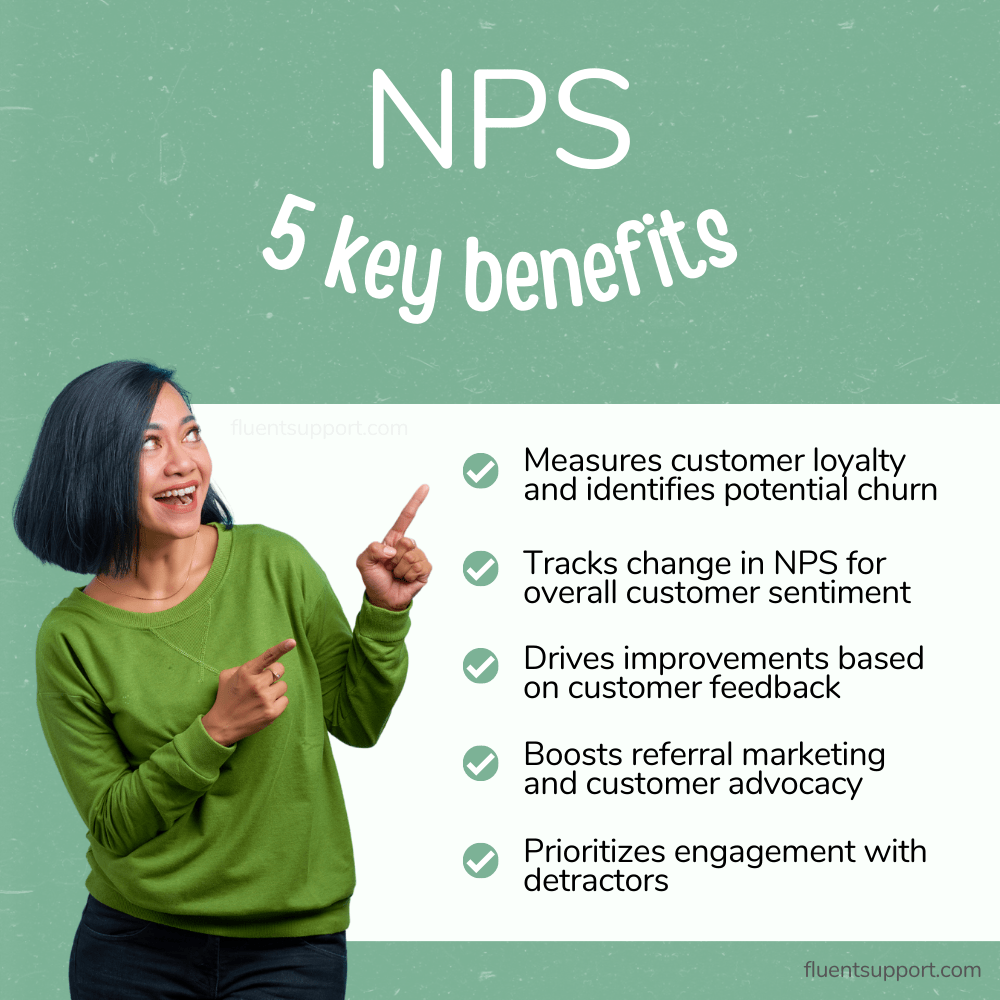
Here are the 5 key benefits of NPS briefly discussed below:
- Measures customer loyalty and identifies potential churn: NPS evaluates customer likelihood of recommending your product/company. It helps identify customers at risk of churning. That allows you to focus on retaining and empowering existing customers.
- Tracks change in NPS for overall customer sentiment: Monitoring NPS scores and analyzing the breakdown of scores (promoters, passives, detractors). It provides insights into trends and helps customer success teams measure customer perception.
- Drives improvements based on customer feedback: Low NPS scores present an opportunity to gather specific comments and evaluate qualitative feedback for product or service enhancements. Addressing issues highlighted by customers can lead to improved experiences and higher NPS.
- Boosts referral marketing and customer advocacy: NPS indicates the likelihood of earning recommendations from satisfied customers. This can significantly impact business growth. Leveraging referrals through case studies, testimonials, and brand ambassador programs further enhances customer loyalty.
- Prioritizes engagement with detractors: Detractors, those who give low NPS scores, require special attention. Following up with detractors, understanding their concerns, and addressing issues can prevent churn and negative word-of-mouth.
Promoter, Passive, and Detractor
Promoters are loyal advocates, detractors are unhappy customers, and passives are indifferent or neutral toward your business. Let’s take a quick look at their characteristics and learn how to deal with them.

What are Promoters?
Promoters are the raving fans of your business/product/services. They are the ones who rate your business with a 9 or 10. Think of them as the die-hard followers who spread the word about your brand. For example, when iPhone users can’t stop talking about the latest iPhone releases.
What are Passives?
Passives are the people who fall in the middle category. They are those who rate your business with a 7 or 8. They might not be actively recommending your brand, but they’re not completely disengaged either.
They’re like the customers who enjoy a decent cup of coffee at a local café but haven’t yet become regulars.
What are Detractors?
Detractors are unhappy customers who score you from 0 to 6. They had a bad experience and are at risk of leaving your brand.
They have the potential to damage your reputation by sharing their negative experiences. It is similar to someone having a terrible hotel stay and leaving scathing reviews online.
How to deal with them?
Here are a few effective strategies to engage with promoters, passives, and detractors.
Dealing with Promoters:
- Maintain high standards and consistent experiences.
- Identify and continue doing the right things to keep them happy.
- Encourage them to become brand ambassadors with referral bonuses.
How to deal with Passives:
- Identify what’s lacking in their experiences.
- Allow them to express themselves through open-ended questions.
- Fill in the missing pieces and provide better experiences.
- Engage them with meaningful interactions and prove your value.
Dealing with Detractors:
- React quickly to identify the reasons behind their bad experiences.
- Incorporate feedback into customer journey mapping.
- Offer perks or bonuses to mitigate their negative experiences.
- Avoid using discounts as bribes; focus on addressing their needs.
- Respond promptly to issues and address their concerns.
Covert Passives and Detractors into Promoters
Discover how to convert passives and detractors into loyal business promoters.
Converting Passives into Promoters
- Get them talking by reaching out with sincere messages.
- Ask direct questions, leaving no space for neutrality.
- Adapt the customer journey based on their feedback.
- Focus on improving your brand and addressing its needs.
Converting Detractors into Promoters
- Use the human touch and open the path to reconciliation.
- React quickly to negative feedback and let customers know you’ve heard them.
- Recognize their concerns, empathize, and prioritize problem-solving.
- Fix their problems, even if it means offering a refund.
- Learn from their feedback to improve the overall CX.
- Build trust and show you have their best interests at heart.
- Be sincere, and honest, And address their concerns promptly.
By learning from mistakes, keeping promises, empathizing, and being honest, you can effectively deal with Promoters, Detractors, and Passives.
Through sincere engagement, quick problem-solving, and continuous improvement, you can convert Detractors and Passives into loyal Promoters.
How to create an NPS calculator in Excel Sheet
An Excel-based NPS calculator streamlines feedback collection, customization, and data analysis. Moreover, it centralizes storage, leverages skills, and integrates for seamless tracking. So, here’s how you can create one for your business:
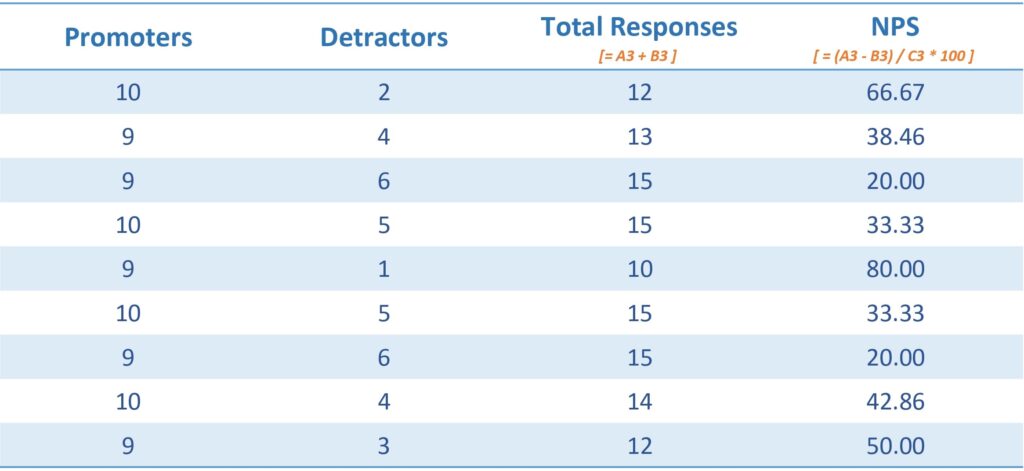
Open a new Excel spreadsheet.
- In cell A1, enter the label “Promoters.”
- In B1, enter the label “Detractors.”
- In C1, enter the label “Total Responses.”
- In D1, enter the label “NPS.”
- In A2, enter the number of promoters (9-10 rating) that you have.
- In B2, enter the number of detractors (0-6 rating) that you have.
- In C2, enter the following formula to calculate the total responses: = A2 + B2
- In D2, enter the following formula to calculate the NPS: = (A2 – B2) / C2 * 100
To format cell D2 as a percentage, select the cell and click the “%” button in the “Number” section of the “Home” tab. The NPS will be automatically calculated in cell D2 based on the number of promoters and detractors in cells A2 and B2.
You can copy the formulas in cells C2 and D2 for additional calculations if needed. Adjust the cell references if you move the data or expand the calculator.
NPS Calculator in Excel Sheet
Get your hands on our simple NPS Calculator, available for free download in an Excel Sheet format!
How to improve Net Promoter Score (NPS) – without focusing on the score
The Net Promoter System ain’t just about getting scores. It’s about digging deep and finding better solutions. Here are 6 steps you can follow to improve your NPS without focusing on the score:
1. Don’t ignore the feedback!
When you get feedback, take action! Reach out to those detractors, and those low scorers. Show them you care.
To gather additional feedback and steer your efforts towards a customer-centric approach, leverage various techniques like conducting direct interviews, sending follow-up emails, and more.
Get a manager or employee on the case, take their complaints seriously, and work really hard to fix the situation. Even if you can’t fix it, explain why and let them know you care. That’s how you start repairing relationships!
2. Get the whole squad on board
You got to make sure everyone in your organization is down with the NPS game. Get your employees excited about winning over as many promoters as possible. Make it clear what NPS is all about, how it’s tracked, and how it can impact those annual reviews.
3. Hold regular sessions & meetings to talk about NPS
Fred Reichheld, the NPS mastermind, calls them “huddles.” These short, interactive meetings are where the magic happens. Reaffirm everyone’s commitment to delivering kick-ass customer experiences. This is the place to talk about service escalations, and brainstorm solutions. Make sure everyone’s on the same page.
4. Feedback = Training fuel
Those NPS surveys are like gold mines. They give you open-ended feedback that can point you to areas where your staff and departments can level up. Use that feedback as a guide to provide targeted training. Teach your employees how to step up their game and deliver an epic customer experience.
5. Find the root cause
When you analyze NPS feedback, you might spot some patterns. Some departments have haters, while others are getting love all day long. That is when you roll up your sleeves and do a thorough root-cause analysis.
Figure out if it’s the department, the product line, or something else entirely that’s causing those low scores. Get to the bottom of it and fix it.
6. Measure the Impact and make structural changes
If the data’s telling you there’s a structural problem, then make changes to your products, policies, and messaging where it makes sense. Regularly keep track of your NPS scores and compare them before and after the changes.
NPS survey
By following these tips, you can effectively analyze your NPS survey data, gain valuable insights, and take targeted actions to enhance customer satisfaction and loyalty.
NPS survey analysis: Understanding your Net Promoter Score
Here are some tips to help you make sense of the survey data:
- Understand the NPS analysis: A good NPS score falls between 0 and 100. Below 0 means more unhappy customers, while above 70 indicates strong customer advocacy.
- Examine NPS distribution: Look closely at the distribution of Promoters, Passives, and Detractors. This is important when comparing different business locations or surveying different customer segments.
- Identify effective survey channels: Determine which survey channels work best for your audience. Segment your customers based on demographics or preferences and use the most appropriate channels to increase response rates.
- Focus on customer engagement: Find out which customers engage the most with your surveys. Target those with high response rates. Furthermore, address low response rates to understand the reasons behind their disengagement.
- Analyze feedback sentiment: Use sentiment analysis to get customer opinions based on their comments. Identify potential issues and prioritize negative feedback from Promoters to prevent customer churn.
- Use Text Analysis: Utilize automated text analysis tools to process large volumes of NPS responses. Group feedback into themes to identify common pain points and areas for improvement.
- Take Action on feedback: Actively respond to customer feedback and close the loop on any negative experiences. Share insights across departments to improve product development, customer support, and marketing campaigns.
- Monitor satisfaction at different stages: Segment customer satisfaction data by lifecycle stages. It is to tailor future campaigns and personalize survey templates.
- Analyze engagement metrics: Correlate customer segments with engagement metrics like session frequency, page visits, and click-through rates. Use this information to drive more engagement from Promoters, and re-engage Detractors.
Let’s look at a few examples of NPS survey questions you can ask to gather customer feedback.
NPS survey questions
- How inclined are you, on a scale of 0-10, to suggest our business to someone you know?
- How likely are you, on a scale of 0-10, to recommend (product/ service name) to a friend or colleague?
- Would you consider recommending (company name) as a potential workplace to your friends? Rate your likelihood on a scale of 0-10.
- What influenced your rating the most?
- In what ways can we enhance your overall experience?
- Which specific product/ service features do you find most valuable and frequently utilize?
- What aspects of your interaction with us left you dissatisfied or wanting more?
- How can we ensure your utmost satisfaction as a customer?
Now, let’s learn how to write an NPS email that can get you a great number of responses.
How to write an NPS email that gets responses
Writing a killer NPS email requires more than a quick note and a survey link. It’s a tad more complex. It doesn’t take much extra effort to craft an engaging NPS email. Here are some lowdowns:
- Set clear expectations: Don’t confuse your customers. Keep it short and focused. For instance, start by saying, “Hey there, noticed you’re a daily user. Help us improve by sharing your feedback.”
- Brand it up ditch blandness: A branded email stands out and reinforces your identity. Tools like Refiner make customization a breeze, using your colors and templates.
- Be human: People prefer emails from real folks, not faceless brands. Let your NPS email come from a team member. Adopt a warm, personal tone to foster a genuine connection.
- Keep it Snappy: Short and Sweet wins the race. Put yourself in your customers’ shoes. Trim the fat, axing anything that doesn’t add value. A/B test and refine for future success.
- Crystal clear: Simple language rocks. Ensure your instructions are easy to grasp. Avoid lengthy explanations about NPS; stick to what matters to your customers.
- Embed or direct? Your call. Some prefer linking to an external survey, but embedding it in the email minimizes friction and boosts engagement. Choose what works best for your audience.
NPS email example
Here’s a quick email example that you can follow to get started.

Keep in mind:
- Segment for relevance.
- Timing matters, don’t rush.
- Add follow-up questions for deeper insights.
- Be clear about the time commitment.
- Show customers they’re valued.
- Optimize for mobile.
- A/B tests one thing at a time.
NPS email best practices
Want to boost your response rates in the next NPS email? Follow these 7 tips to make it happen:
- Brand your email for impact.
- Send from a person, not a brand.
- Keep it short and focused.
- Use simple and clear language.
- Choose between embedding or directing to the survey.
- Consider follow-up questions for deeper insights.
- Communicate the time commitment upfront.
Net Promoter Score (NPS) software
NPS software allows businesses to collect and analyze feedback from customers using the NPS methodology. Let’s explore the features, pros, and cons of NPS software to help you make an informed decision for your business.
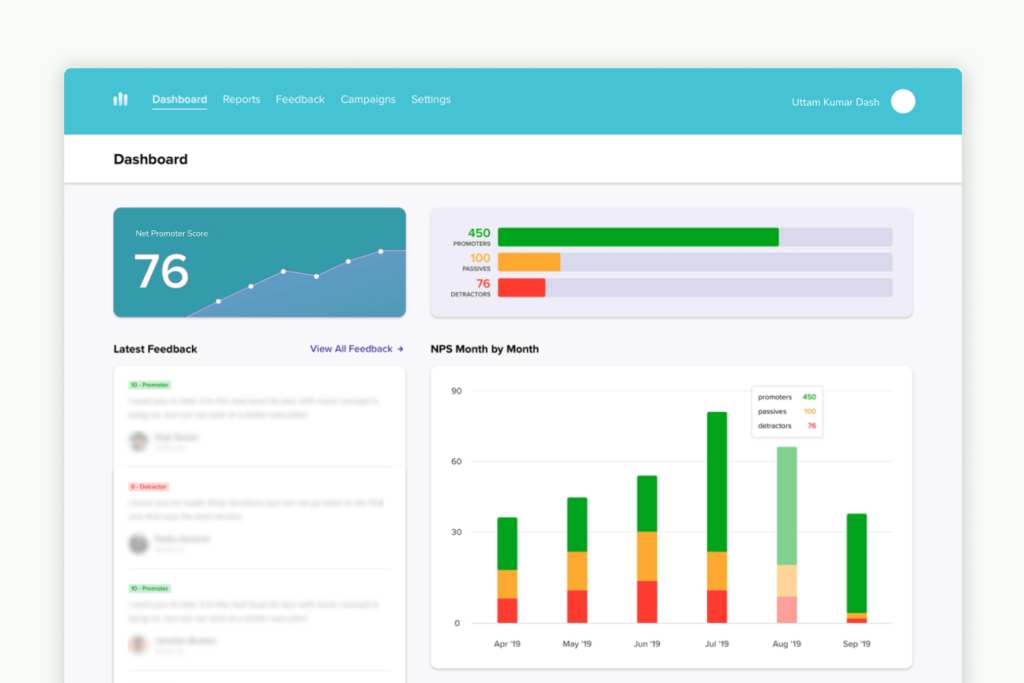
Features of NPS Software
Customization and segmentation
- NPS software enables extensive survey customization, allowing you to incorporate your brand elements such as logos, colors, and fonts.
- It supports audience segmentation, allowing you to target specific customer groups based on factors like demographics, purchase history, or engagement level.
Survey implementation
- NPS software allows you to conduct both relationship and transactional surveys.
- Relationship surveys are sent at regular intervals to gauge overall brand sentiment, while transactional surveys are triggered after specific customer interactions.
- The software includes advanced scheduling logic to avoid survey fatigue and ensure optimal response rates.
Valuable analytics and targeted insights
- NPS software provides clear visualizations and reports to help you understand your NPS metrics.
- It offers quantitative analysis, including response rates, NPS ratings by segment, and customer demographics.
- The software also analyzes qualitative feedback by identifying keywords, themes, and trends, helping you derive actionable insights.
Seamless integration
- NPS software integrates with your existing technology stack, including CRM, customer success tools, help desk software, and chat software.
- It allows for automated workflows and notifications, ensuring timely responses and actions based on customer feedback.
Internal visibility and empowering action
- NPS software provides easily digestible reporting, making data accessible to all departments within your organization.
- It enables instant response and engagement with customers, empowering you to take action on their feedback.
- The software facilitates turning promoters into advocates, engaging passives, and addressing detractors to enhance customer loyalty and satisfaction.
Pros of NPS software
Accurate measurement: NPS software is specifically designed to measure Net Promoter Score accurately, providing you with reliable data to assess customer loyalty and track changes over time.
Automated processes: NPS software automates survey distribution, data collection, and analysis, saving you time and effort compared to manual methods.
Actionable insights: By analyzing qualitative feedback and identifying trends, NPS software helps you gain valuable insights to drive improvements in your customer experience.
Integration and scalability: NPS software seamlessly integrates with your existing systems, allowing for scalability as your business grows.
Enhanced customer engagement: NPS software enables you to engage with customers in real time, closing the feedback loop and fostering stronger relationships.
Cons of NPS Software
Response rate challenges: Depending on the survey distribution channels used, NPS software may face limitations that affect response rates, potentially reducing the amount of actionable feedback obtained.
Workflow management: Some NPS software may require dedicated resources or expertise to manage and optimize the feedback program effectively.
Cost considerations: Specialized NPS software may involve additional costs compared to home-grown or add-on solutions, requiring a budget allocation for implementation and subscription fees.
Remember, while NPS software offers numerous benefits, it’s essential to consider factors such as response rates, workflow management, and costs to choose the best solution for your business.
Go ‘NPS’ and beyond for exponential growth
NPS creates a view of customer loyalty. The absolute score is less important than the trend. We learn from both promoters and detractors.
Jeff Immelt quote on NPS
Don’t just stop at analyzing NPS, or CSAT data. Take it a step further by engaging with them and implementing a referral program.
Open up a dialogue with satisfied customers. Also, encourage them to spread the word about your business. This way, you can keep them satisfied while also acquiring new customers. It’s a win-win situation that can lead to long-term success and growth.
Note: Net Promoter, Net Promoter System, Net Promoter Score, NPS, and the NPS-related emoticons are registered trademarks of Bain & Company, Inc., Fred Reichheld, and Satmetrix Systems, Inc.






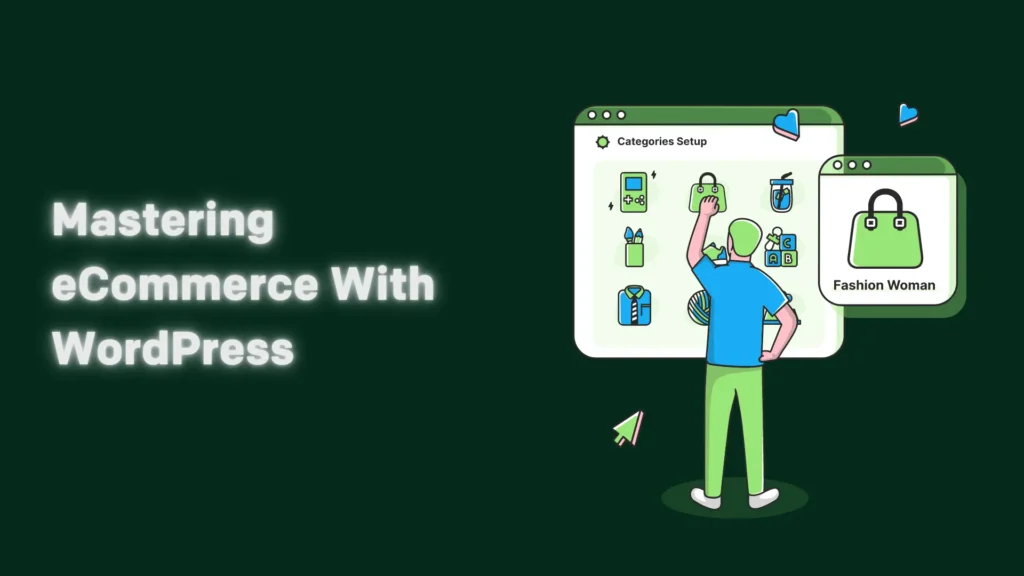
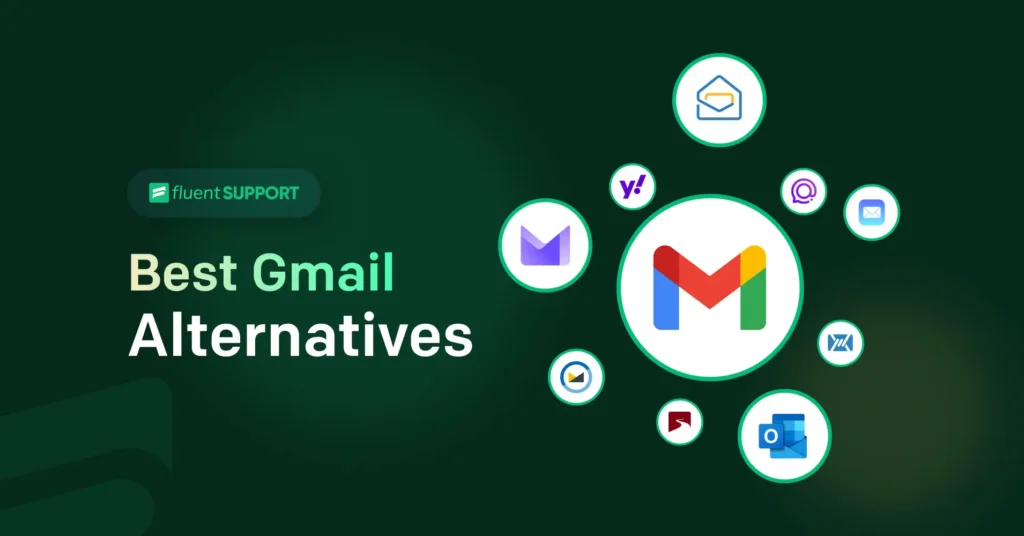

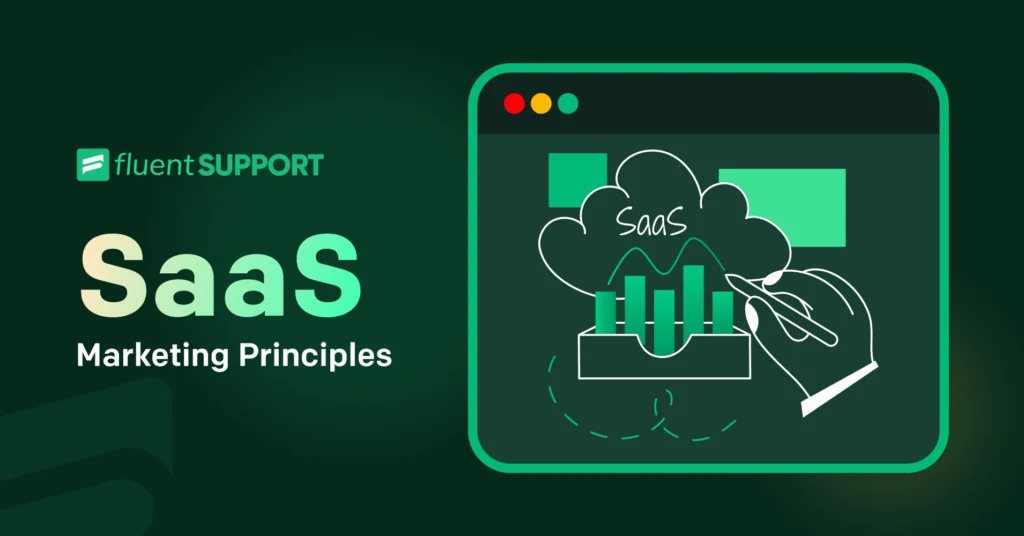

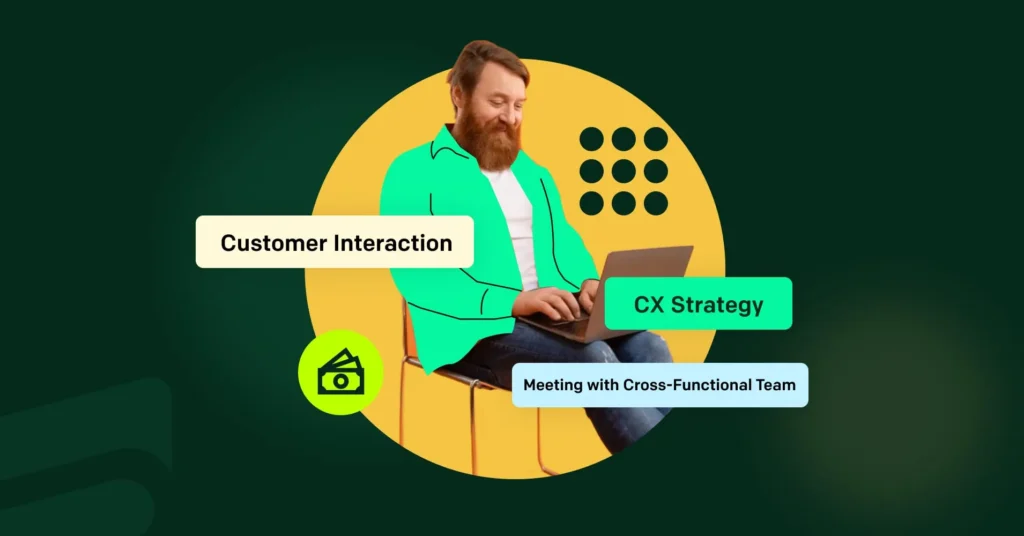
Leave a Reply